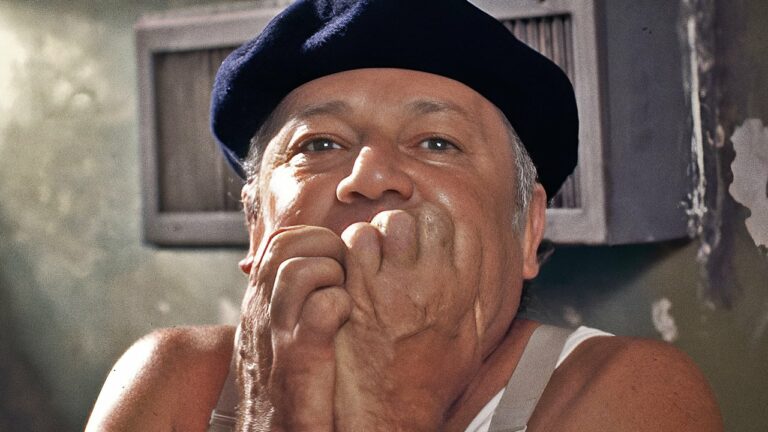
Introduction: The Essence of My Mother’s Smile
Marco Bellocchio’s My Mother’s Smile (L’ora di religione (Il sorriso di mia madre)) is a profound 2002 Italian film that delves into themes of faith, family, and personal identity. Set against the backdrop of contemporary Italian society, the film offers a poignant critique of religious orthodoxy and its intersections with personal belief systems. The movie’s title itself reflects a dual-layered narrative that balances familial devotion with skepticism of institutionalized religion, providing a cinematic experience that is both thought-provoking and emotionally resonant.
Marco Bellocchio: The Visionary Behind the Film
Marco Bellocchio, one of Italy’s most celebrated filmmakers, is known for his exploration of existential themes and socio-political critiques. With My Mother’s Smile, Bellocchio continues his tradition of presenting complex characters caught in moral and philosophical dilemmas. The director’s sharp narrative style, combined with his ability to portray human frailty, makes this film a standout work in his illustrious career.
Plot Overview: A Journey of Faith and Skepticism
The film follows Ernesto Picciafuoco, a renowned atheist and successful artist, as he navigates the turbulent waters of familial expectations and religious pressures. Ernesto’s world is turned upside down when he learns that his deceased mother is being considered for sainthood by the Catholic Church. This revelation triggers a series of introspections and confrontations that challenge his deeply held beliefs.
As Ernesto uncovers more about his mother’s life and the motivations of his family, the narrative unfolds into a layered exploration of identity, love, and faith. The tension between Ernesto’s secular worldview and his family’s devout religiosity forms the crux of the film’s conflict.
Themes Explored in My Mother’s Smile
1. Faith and Atheism:
The film masterfully juxtaposes Ernesto’s atheism against his family’s devout Catholicism. Through this dynamic, Bellocchio examines how belief systems shape identity and relationships, highlighting the struggles of individuals who question societal norms.
2. Family Dynamics:
Ernesto’s strained relationships with his siblings and other relatives underscore the complexities of familial loyalty and manipulation. The family’s collective desire to canonize their mother serves as a metaphor for their need to maintain a façade of sanctity and unity.
3. Art and Religion:
As an artist, Ernesto represents creativity and free expression, standing in stark contrast to the rigid doctrines of organized religion. His art becomes a vehicle for questioning the morality of the Church and its influence on society.
4. Individual vs. Institution:
Bellocchio critiques institutionalized religion’s intrusion into personal lives. Ernesto’s resistance to his mother’s sainthood reflects a broader struggle against societal conformity and the coercive power of tradition.
Key Characters and Their Roles
1. Ernesto Picciafuoco (Sergio Castellitto):
The protagonist, Ernesto, is a deeply introspective character whose journey forms the heart of the narrative. Sergio Castellitto delivers a powerful performance, capturing Ernesto’s internal conflicts with nuance and authenticity.
2. Ernesto’s Mother (Through Flashbacks):
Though deceased, Ernesto’s mother is a central figure whose life and legacy shape the film’s events. Her perceived sainthood serves as a catalyst for the story’s unfolding.
3. The Family:
Ernesto’s siblings and extended family are portrayed as opportunistic and deeply invested in the canonization process, providing a stark contrast to Ernesto’s skepticism.
4. The Church Officials:
Representing institutional authority, the Church officials are depicted as both revered and flawed, showcasing Bellocchio’s balanced critique of religious institutions.
Cinematic Techniques and Visual Storytelling
1. Symbolism:
The film employs rich symbolism, particularly through the recurring motif of Ernesto’s artwork. His paintings often serve as visual metaphors for his inner turmoil and his defiance of religious dogma.
2. Lighting and Color Palette:
Bellocchio uses lighting to emphasize the dichotomy between light and dark, mirroring Ernesto’s moral and spiritual conflicts. The muted color palette further enhances the film’s introspective tone.
3. Pacing and Editing:
The film’s deliberate pacing allows viewers to fully immerse themselves in Ernesto’s journey. Bellocchio’s use of seamless transitions between present-day events and flashbacks adds depth to the narrative.
Reception and Critical Acclaim
Upon its release, My Mother’s Smile was met with critical acclaim for its bold exploration of contentious themes. Critics praised Bellocchio’s fearless storytelling and Sergio Castellitto’s compelling performance. The film was particularly lauded for its ability to address sensitive topics like atheism and sainthood with intelligence and subtlety.
Cultural and Social Commentary
1. Critique of Religious Orthodoxy:
The film questions the role of religion in contemporary society, challenging viewers to reflect on their own beliefs and the influence of tradition.
2. Representation of Modern Italy:
Through Ernesto’s struggles, Bellocchio paints a portrait of modern Italy grappling with the tension between progressivism and conservatism.
Awards and Recognition
While My Mother’s Smile did not receive mainstream commercial success, it was recognized at numerous film festivals, earning accolades for its direction, screenplay, and performances. The film remains a cornerstone in Bellocchio’s body of work, celebrated for its intellectual depth and emotional resonance.
Conclusion: A Cinematic Exploration of Faith and Identity
My Mother’s Smile is a testament to Marco Bellocchio’s genius as a storyteller. By weaving together themes of faith, art, and personal conviction, the film transcends its narrative to offer a profound commentary on the human experience. For those seeking a deeply intellectual and emotionally rich cinematic journey, My Mother’s Smile is a must-watch.






